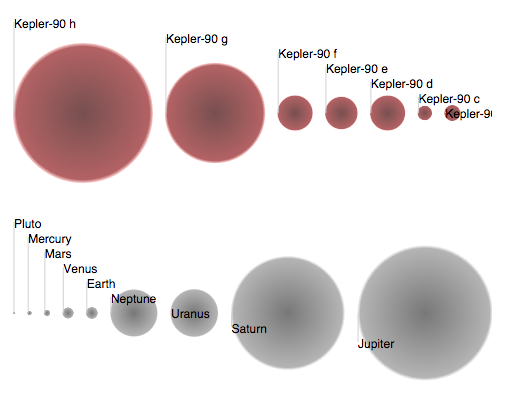Since years scientists are searching the space trying to find an Earth-like planet that supports life.
In 2013, a team of European astrophysicists has discovered the most extensive planetary system to date that orbits star KOI-351 which is 2500 light years away from Earth, with seven planets assembled in a similar way as our Solar System, with small rocky planets close to the parent star and gas giant planets at greater distances.
While astronomers have discovered more than 1000 exoplanets, this is the first solar system analogue detected to date.
The planets were discovered by Juan Cabrera, an astrophysicist at the DLR Institute of Planetary Research in Berlin-Adlershof.
“We find planets in any order, at any distance, of any size; even planetary classes that don’t exist in the solar system,” Cabrera said, “No other planetary system shows such a similar architecture to that of our cosmic home as does the planetary system around KOI-351“.
KOI is the abbreviation for “Kepler Object of Interest”, which means the star was observed by NASA’sKepler space telescope, and classified as a candidate for the existence of exoplanets.
The planets names are: Kepler-90 h, Kepler-90 g, Kepler-90 f, Kepler-90 e, Kepler-90 d, Kepler-90 c, Kepler-90 b. The image hereunder shows the approximate sizes of the planets in this system:
The compact nature of these planets means that most of them orbit on the inside of their star’s habitable zone (the range of orbits where liquid water could be sustained on a planet’s surface). The only one lying inside the habitable zone is the outermost planet Kepler-90 h, which circles its star every 331 days. Being a Jupiter-sized, more likely gaseous world, Kepler-90 h could harbor moons that could have conditions suitable for life. Although out of the reach of current observing techniques, exo-moons around other exoplanets could be discovered by the next generation of space-based planet-hunting telescopes being proposed or constructed at the moment.
A twin to Earth planet with the same temperature and size as Earth has not yet been identified, but the analysis is far from over as scientists continue to search the Kepler data for the tiny signature of such a planet. Other Kepler discoveries include hundreds of star systems hosting multiple planets, and have established a new class of planetary system where planets orbit more than one sun.
Source: http://curious4science.com












